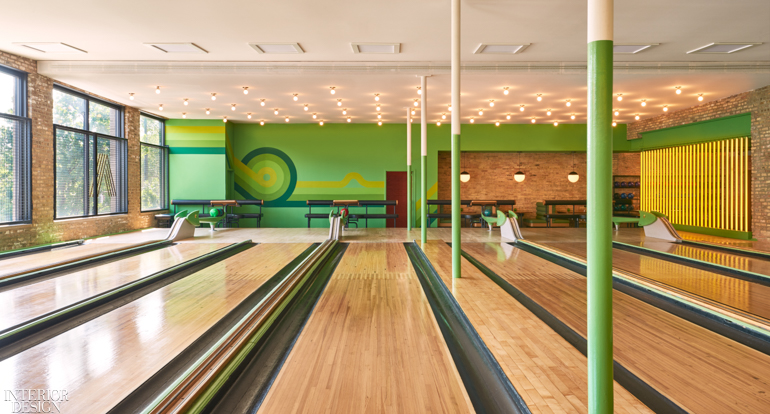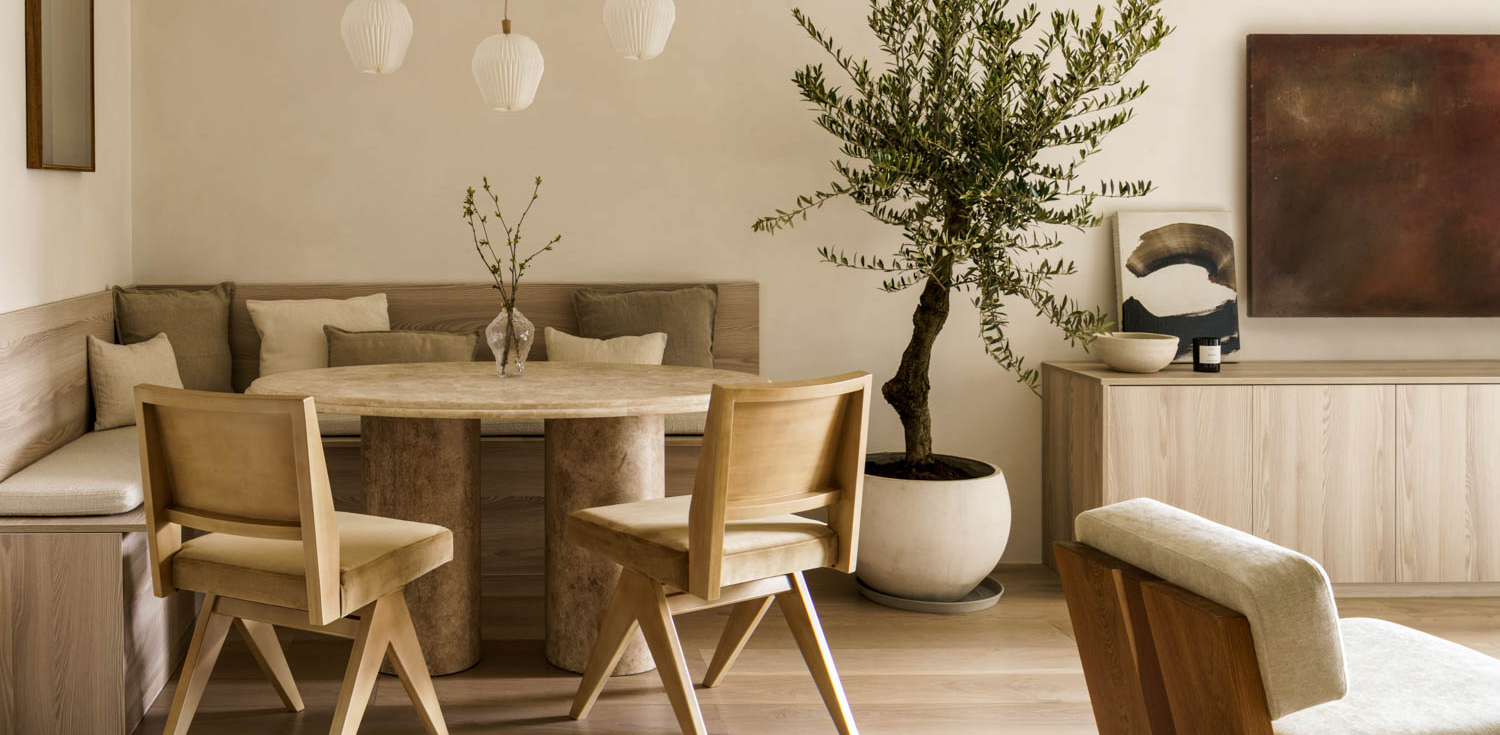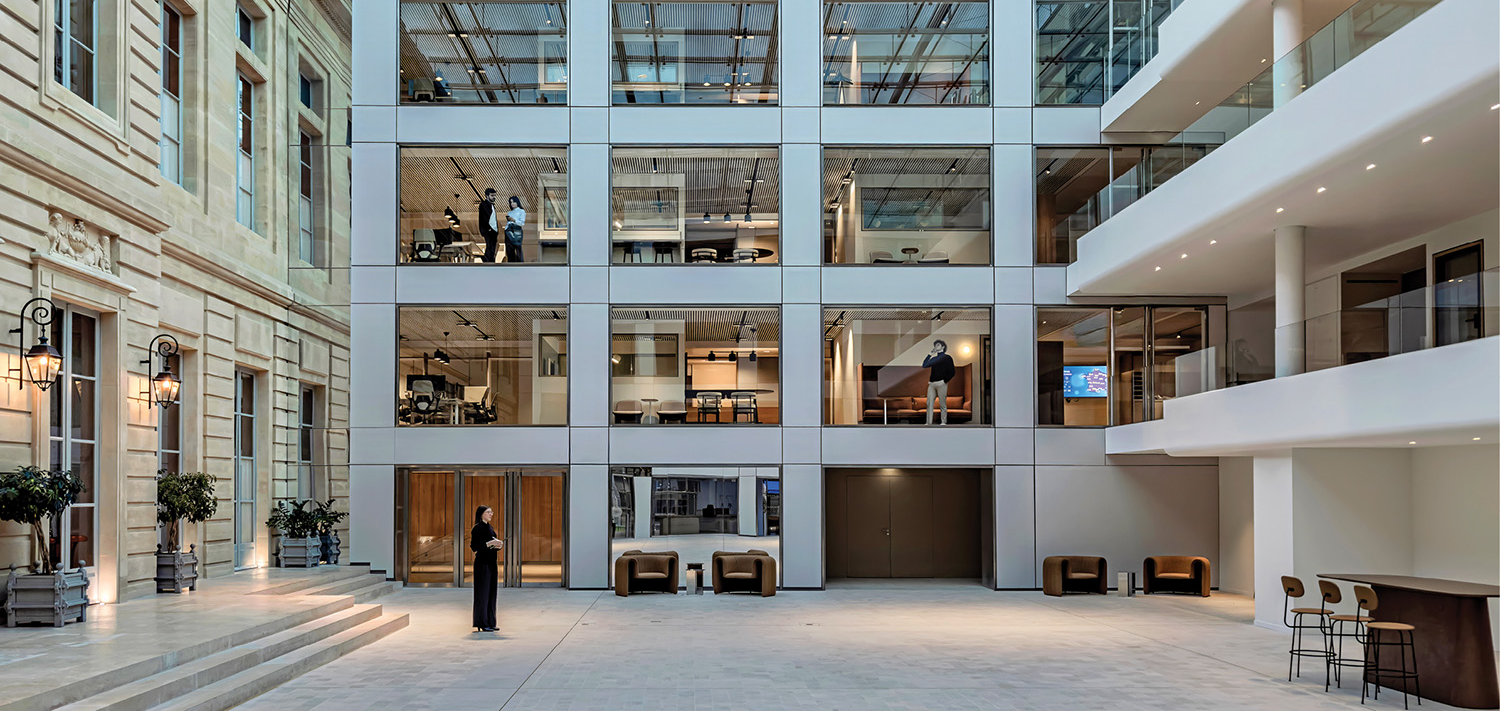Studio 6F Breathes New Life into Abandoned Chicago Bowling Alley

When Chicago native Luke Blahnik first spotted a “for rent” sign in the window of a shuttered Milwaukee Avenue grocery store nearly five years ago, he had no idea what he was getting himself into. The unassuming, box-shaped building’s second-floor storage space, it turns out, was a long-abandoned bowling alley, originally in operation during the 1950s. Instead of turning away, Blahnik dove right in with the mission to protect and preserve the space, all for the good of its surrounding community.

To update the interiors, Blahnik enlisted the help of local design firm, Studio 6F, led by Gil Melott, and the principal architect at Range Design & Architecture, Mason Pritchett. Given Blahnik’s passion for the project and determination to do what’s right for the neighborhood, Melott happily signed on. “This is not a hyperbole,” Melott begins, “[Blahnik] really is a dream client.” In fact, Blahnik proposed the name Avondale Bowl to show that the recreational space belongs to the community. Together, Blahnik, Melott and Pritchett ensured all fabrication materials used throughout were made in Chicago.

The stairs leading up to the second-floor entrance to the bowling alley and bar area offer visitors the same element of surprise Blahnik experienced when he first climbed them and discovered the eight dormant lanes. Melott used a deep orange hue to envelope the entryway accented by a bright green door—setting the tone for the vibrant palette used throughout the space.

For Melott, the biggest design challenge centered around finding a balance between kitsch and nostalgia, to create a timeless, rather than trendy, space. “There’s a difference between preserving the past literally and preserving the intentions of the origin,” he says. Hence the green; discovered to be a part of the original design, the team chose to make it the lanes’ feature color. The pinsetters and returns work on the original mechanics, although refurbished for freshness. Additionally, Melott made a “deliberate decision not to add electronic scoring,” to ensure players get involved and engaged with their bowling game and who they’re playing it with.

The fun continues in the adjacent bar area, which shifts from a bright green color scheme to one of sophisticated reds and oranges for a throwback feel. Melott’s team preserved the bar’s original railing and added a tasteful neon halo ring light above it as a subtle spotlight. The Range team extended the original skylight which adds “more vibrancy of light in the room,” Melott explains, noting that this offers a major change in ambiance, which makes the sultry snakeskin stools stand out, beckoning visitors to take a seat.




